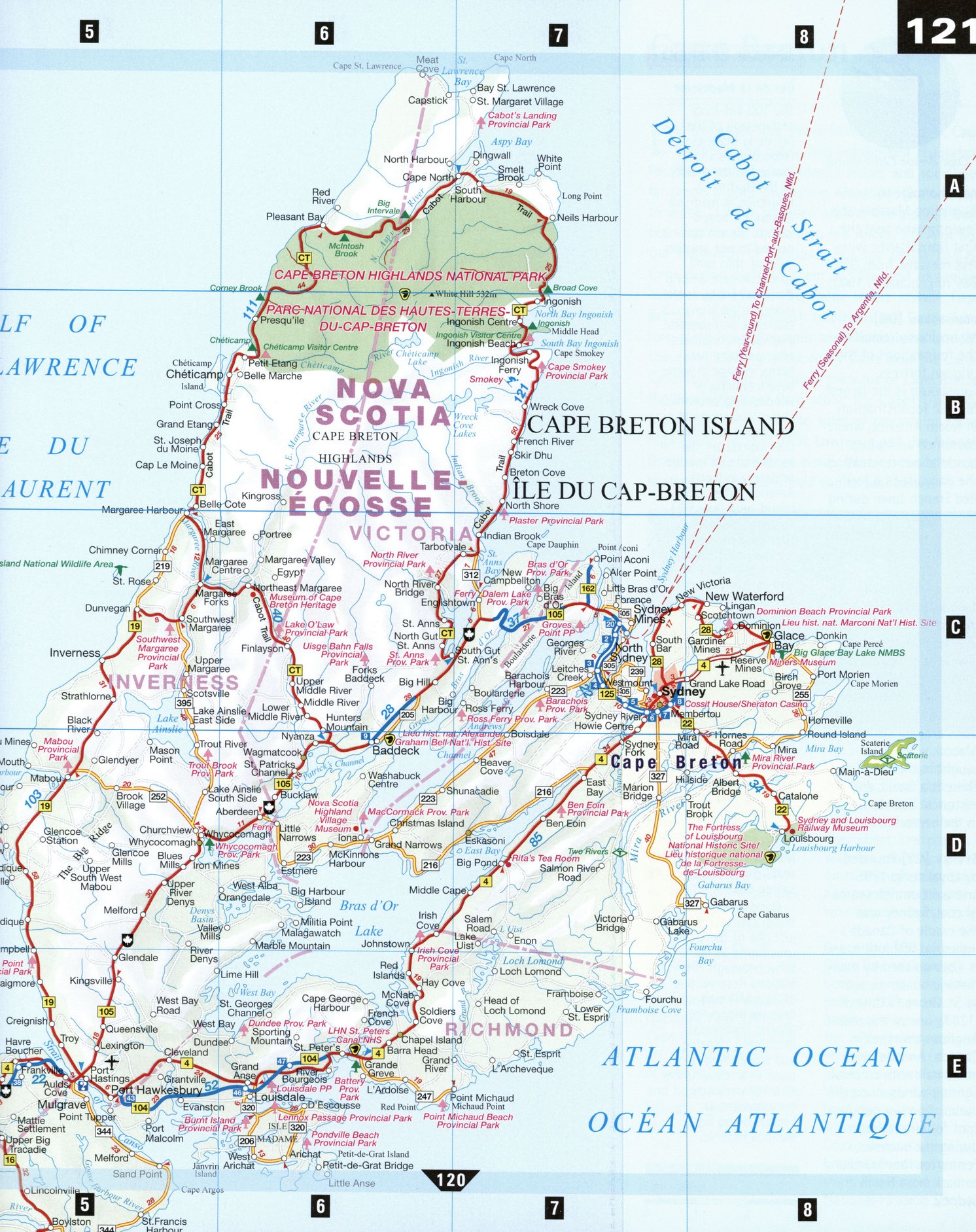Highways map of Cape Breton with cities
Road map of Cape Breton with cities and towns
Road map of Cape Breton. Detailed map of the highway and local roads of Cape Breton with cities and towns.


Highways map of Cape Breton with cities and towns
Road map of Cape Breton. Detailed map of the highway and local roads of Cape Breton with cities and towns.
Cape Breton
Long known as "the" Nova Scotia destination, Cape . Breton Island has a well-established reputation for fine hospitality, wonderful music, and spectacular scenery, once prompting Alexander Graham Bell to write, "I have travelled around the globe. I have seen the Canadian Rockies, the Andes, the Alps and the Highlands of Scotland, but for simple beauty, Cape Breton outrivals them all." The seat of ancient culture and hub of the Celtic music revival, Cape Breton is where Scottish traditions and Gaelic folklore come alive. Bagpipes and fiddles echo through the glens, starting in the rocky shore near the Canso Causeway to the incredible plateaus of Cape Breton Highlands National Park, along the Cabot Trail. This highway, carved into the sides of mountains rising high above the Gulf of St. Lawrence and the Atlantic Ocean, offers fabulous vistas. Whales can often be spotted offshore, and bald eagles soar above.
Baddeck [D6] The famous inventor, teacher, and humanitarian Alexander Graham Bell (1847-1922) lived and worked here for the last 37 years of his life. A national historic site displays one of the largest collections of artifacts pertaining to his life and work.
Cape Breton Highlands National Park [A6-7] Cape Breton's highlands are a colorful tapestry of woodland, tundra, and bogs, home to mink, bobcats, lynx, white-tailed deer, and more than 200 bird species. The Cabot Trail skirts the park, while 26 hiking trails offer everything from short, interpreted walks to challenging hikes through mountain and coastal landscapes with superb views.
Glace Bay [C8] Life in Glace Bay has always been synonymous with coal, and life in the mines at the turn of the 20th century can be experienced at the Miner's Museum and Village. If you don a hard hat, retired miners will take you inside Ocean Deeps Colliery, an under-the-ocean mine shaft. The Marconi National Historic Site Cape Breton Celtic sound pays homage to Guglielmo Marconi, the inventor who sent the first transatlantic wireless message from Glace Bay to England in 1902.
Louisbourg [D8]
Meticulously rebuilt on the foundations of the original fortress, Louisbourg is the largest historic reconstruction in North America, where costumed animators bustle about re-creating the daily life in a fortified French town during the summer of 1744. Try an 18th-century meal at the Hotel de la Marine.
Mabou [D5] North America's only single malt whisky distillery, Glenora Inn and Distillery is located in the hills of Cape Mabou, and is like a slice of old Scotland. Scottish traditions are still strong in Mabou, where Gaelic is taught in the schools. There is a Gaelic and Historical Society Centre in the center of town.
Sydney [C7] Founded by Loyalists in 1785 and built on rich seams of coal, Sydney was the cradle of Canada's industrial revolution, and is distinguished by many historic buildings, such as St. George's Church (1787), one of the oldest Anglican churches in Canada. An extensive boardwalk with colonial lighting winds along the harbor front-a popular spot for entertainment during the summer. Ferries for Newfoundland embark from North Sydney.
SPECIAL INTEREST
Cities de la Madeleine
The 100-km-long archipelago of the lies de la Madeleine (Magdalen Islands), located in the middle of the Gulf of St. Lawrence, is made up of about a dozen islands. Six are connected to one another by long, thin sand spits. Life here among the Madelinots, as the Islanders are known, is laid-back and pastoral. Visit quaint churches and vanishing hay barns, indulge in some beachcombing or windsurfing, or learn about shipwrecks at the Musee de la Mer. (The islands are the second largest marine cemetery in North America, after Sable Island, with over 500 shipwrecks.) More than 50 bird species inhabit the island during migration. A large bird sanctuary, lie Rocher-aux-Oiseaux, may be visited by boat.
Bras d'Or Lake
The highlands meet the lowlands at Bras d'Or Lake. Circle this inland sea to experience the life of Scottish settlers at lona, learn about quarrying at Marble Mountain, delve into trains and train travel at the Orangedale Railway Station Museum, or take a seabird and ecological sailing tour.
Hand-made traditional ash baskets are just one of the treasures found at the Whycocomagh First Nations Reserve, one of four Mi'kmaq reserves along the shores. Traditional drumming, dancing, and storytelling take place at a reenactment of a 16th-century encampment at Chapel Island First Nations Reserve.